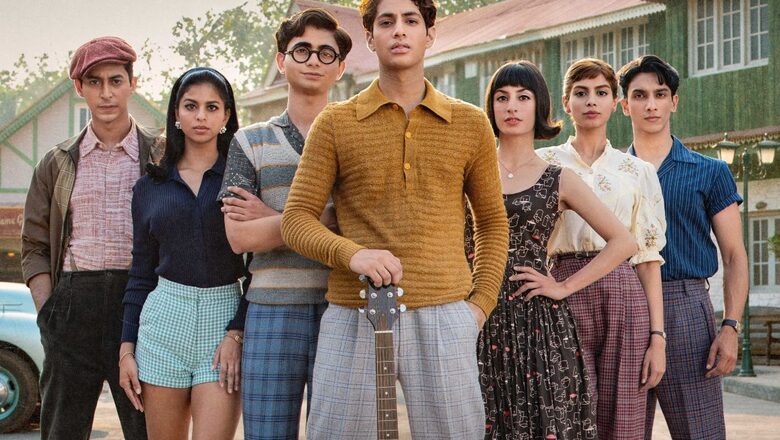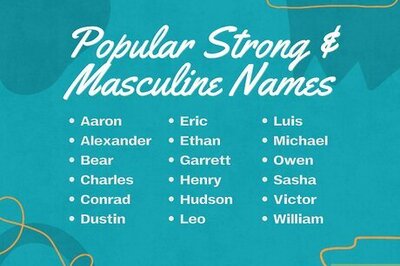
views
The Anglo-Indian community has reason to be miffed. It has been taken for granted as much in the 2023 Netflix offering The Archies as in the trope-ridden 2004 Anjan Dutta movie Bow Barracks Forever. Indians who do not know any Anglo-Indians personally have little go by other than what is portrayed in mass media like movies and TV. Thus, Anglo-Indians seem to be doomed to be either ruthlessly stereotyped or superficially imposed to suit a storyline.
The basic theme of Archie comics lends itself to desi films: the eternal Archie-Ronnie-Betty triangle with Jughead as the loyal wingman. That many hit films from Bobby to Kuch Kuch Hota Hai and more, trace their roots to this Archie triangle template could be the reason for this latest avatar. But none of the earlier ones had gone so far as to transpose all the names and places—from Riverdale High to Pop Tate’s—into a fictional Indian (and Anglo-Indian) setting.
But The Archies is not meant to be a film about Anglo-Indians. That’s just a facile device to justify the use of Western character names from the iconic American comic series. The film is meant to be the launchpad for three young Indian ‘nepo’ actors. And Indian audiences are expected to buy into this grafting because the characters are supposedly Anglo-Indian and hence do not morph into Archisman ‘Archie’ Androo, Bitiya ‘Betty’ Kapoor and Varunika ‘Ronnie’ Loje.
As Anglo-Indians are caricatured in mainstream cinema and indistinguishable from the larger population of Christians of Goan and Mangalorean heritage for most audiences, the only bright spot is that The Archies steers clear of one set of tropes. There are no wastrels and drunks called Tom and Peter or squabbling harridans and sultry sirens named Rosie and Mabel, whose lilting English conversations are peppered with “dat bluddy bugger” and “wot men”.
But there is egregious cultural appropriation, nevertheless. The Anglo-Indian community has been commandeered to tell a story that has nothing to do with it; the association is superficial and at times even gratuitous. Do names like Archie and Ronnie, wearing dresses, eating roast chicken and singing along to a standup piano mean only Anglo-Indians? Many Indians without mixed parentage have had such names, worn such clothes, eaten roasts and sung Auld Lang Syne.
In effect The Archies offers another set of equally inaccurate and unfair tropes about the community, following the hoary tradition of Indian cinema, rather than taking an informed 21st century view given the vast amount of information now at the disposal of anyone who cares to actually research. Which means Indian audiences remain as inadequately informed as ever. Or maybe the game plan was indeed to take advantage of their ignorance to sell an improbable transposition.
Ask Indians to recall a movie about Anglo-Indians, the most cosmopolitan among us will say Bhowani Junction, but that was a Hollywood production starring Ava Gardner and Stewart Granger. Among Indian movies, some might (correctly) mention the 1975 hit Julie, with the song My Heart is Beating sung entirely in English by Preeti Sagar. Bengalis may also recall Soptopodi, in which Suchitra Sen plays Rina Brown. Most will be hard-pressed to name any other.
There was, of course, Junoon, adapted from the novella A Flight of Pigeons by India’s most famous Anglo-Indian writer Ruskin Bond, starring Jennifer Kendall and Nafisa Ali as Miriam and Ruth Labadoor but it is set in 1857. Merchant Ivory’s Cotton Mary starring Madhur Jaffrey as a scheming Anglo-Indian nurse in Kerala scarcely caused a box office ripple. And the protagonist of Pradeep Krishen’s Massey Sahib is an Indian Christian, not Anglo-Indian.
Violet Stoneham (Jennifer Kendall) in Aparna Sen’s 36 Chowringhee Lane was indeed an Anglo-Indian but the eponymous Bobby (Dimple Kapadia) was not. Whether Nancy Pereira (played by Tina Munim) in the film Baaton Baaton Mein and her beau Tony Braganza (Amol Palekar) were Anglo-Indian is unclear. And Konkona Sen Sharma’s A Death in the Gunj was merely set in the Anglo-Indian hill station of McCluskiegunj and does not focus on the community.
Despite all these films being available on OTT platforms, Anglo-Indians remain as little understood now by most Indians as they were before, and perhaps even harder to distinguish. Earlier concentrated in the ‘Presidency cities’ and railway colonies, mass migration after Independence has reduced Anglo-Indian visibility though they once dominated sports—Leslie Claudius, Norman Pritchard and Roger Binny, to name just three—the police, railways and teaching.
Today very few even know the official definition of the Anglo-Indian community. Not every one of mixed Eurasian parentage can be called so; only those people who are descended from Europeans from the paternal side. Hence, their surnames have to be European: Portuguese, British, French, Dutch and Danish, the five nations that had set up colonies around India and whose men comingled with local women over three centuries and produced mixed-race offspring.
These Eurasians formed their own community as they were shunned by Indians and sidelined by Europeans, and also married among themselves. They not only developed their own hybrid culture including cuisine and customs with regional variations, but they also even had a distinct Anglo-Indian accent—albeit not the one parodied in popular discourse. They also enjoyed certain advantages during the Raj such as preferential employment in railways and police services.
After Independence their role in economic, cultural and social spheres diminished as their privileges disappeared; many became segregated in pockets of cities, a large section of them migrated to Australia and the UK, and some even “integrated”. However, the children of Anglo-Indian women who marry Indian men are not considered “Anglo”, further reducing the community’s official numbers. Even their reserved seats in Parliament and 14 legislatures will go by 2030.
Right up to the 1970s most Indians in English medium schools even in small towns could probably recall an Anglo-Indian classmate or two. School teachers from that community were common as well. Today, even those studying in cities with a strong Anglo-Indian legacy like Kolkata and Mumbai would probably not have any from that community in their class except in some localities. Sadly, Anglo-Indian teachers have all but disappeared from Indian pedagogy.
All this adds up to a community in dire need of a fillip. Of late there has been a resurgence of interest in Anglo-Indian culture—especially food—thanks to social media. However, there is a homogenisation there too: many regional Anglo-Indian Christmas customs, for instance, are giving way to international or even Indian ones. A proper, readable history of the community is yet to be written, and a sensitive, 21st-century movie on the community is yet to be made.
By foisting a faux Anglo-Indian story on an American template, The Archies has done nothing for that depleting community. But the purpose of the movie was not altruistic; it was to launch three precious star kids piggybacking on the perennial popularity of the Archie-Ronnie-Betty love triangle. It did not resort to reiterating Anglo-Indian stereotypes, but the movie could have made a real difference given the hype it generated. Instead, it was just D-uh, as Moose would say.
The author is a freelance writer. Views expressed in the above piece are personal and solely that of the author. They do not necessarily reflect News18’s views.

















Comments
0 comment